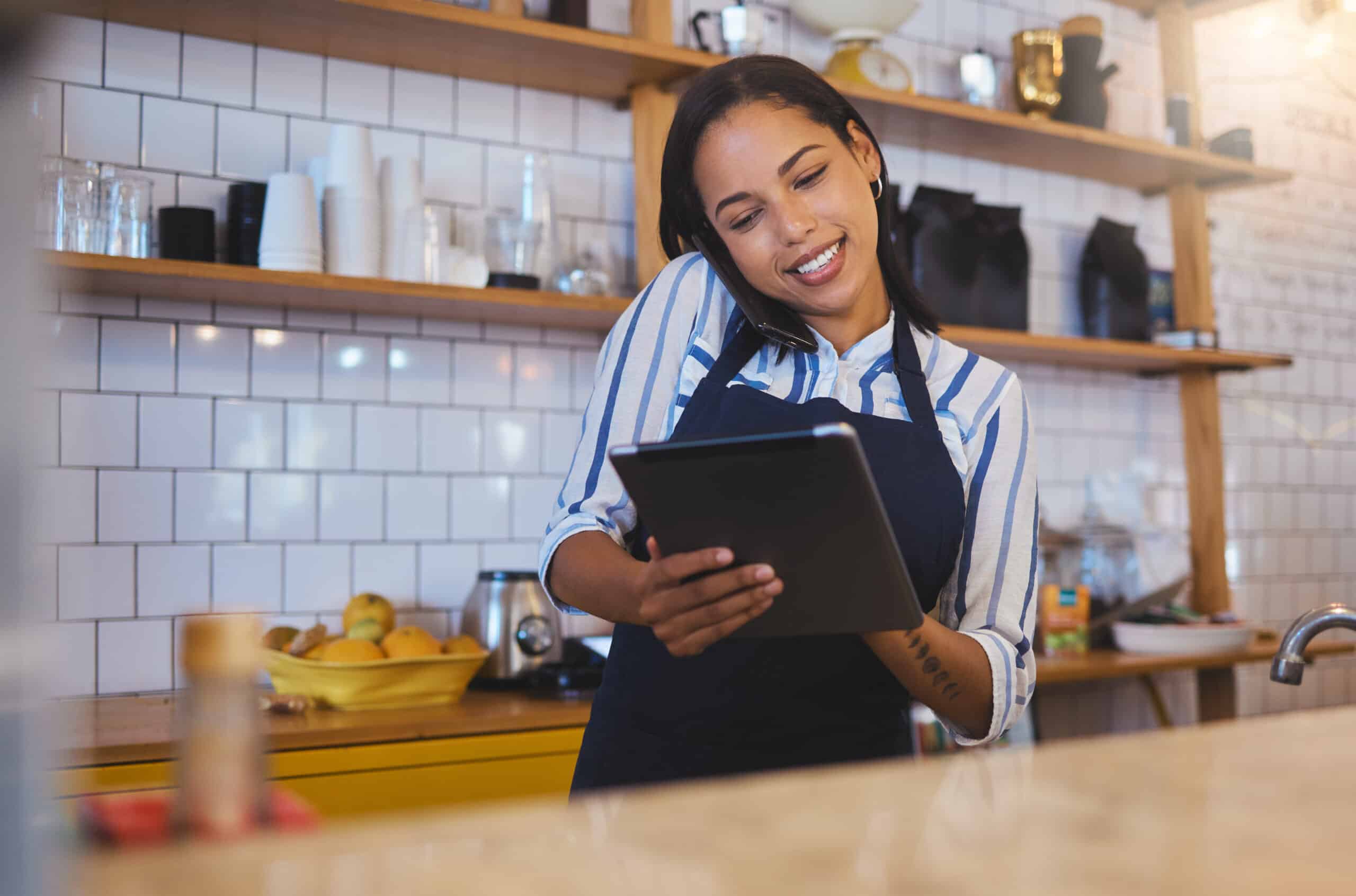Restaurants were once typically small operations, each owned by a family whose members handled everything from waiting tables, cooking meals, changing lightbulbs, and mopping floors. Today, up to 60% of a region’s restaurants are part of a larger chain, owned and operated by complex organizations that emphasize efficiency, consistency, and brand reputation. Just as leaders take advantage of the latest technology to optimize their company’s office operations, they must take the same approach in their restaurants to stay competitive in an increasingly tech-driven market. When restaurants modernize technology, it streamlines daily tasks and builds restaurant customer loyalty by boosting brand consistency. Restaurant KPIs such as health inspection scores, customer satisfaction, return visits, and overall revenue all go up.
The Intersection of Technology and Restaurant KPI Improvement
Each restaurant KPI is uniquely essential for measuring success and guiding operational decisions. When new technology is put in place, it has a profound impact on these KPIs, enhancing everything from kitchen efficiency to customer satisfaction, staff productivity, and revenue generation. Let’s look at how ten KPIs in different areas of restaurant operations—kitchen, dining room, staff, customer experience, and revenue—are positively influenced by technology.
1. Health Inspection Scores
Your brand’s impeccable reputation and the uninterrupted operation of your restaurants both require high health inspection scores. By enabling detailed, consistent internal audits that mirror government inspection criteria, digital field assessment tools maintain your brand’s health and safety standards. These cutting-edge tools guide managers through comprehensive checks of cleanliness, temperature monitoring, food handling, and safety protocols, ensuring that best practices are consistently followed. They also hold employees accountable by logging completed tasks and flagging any missed steps in real time. This fosters a culture of compliance that directly correlates to improved scores during official inspections by local authorities.
2. Order Accuracy
Every restaurant kitchen is a fast-paced environment, but it must also be an accurate one. Errors in order preparation lead to customer dissatisfaction and the waste of costly ingredients. Technology ensures that orders are accurately communicated and prepared. Opportunities for human error are reduced and fewer mistakes occur. Customer satisfaction scores – a key restaurant KPI – go up. Advanced POS systems and kitchen display systems mitigate these issues by streamlining communication between the front and back of the house.
3. Waste Margins
Food waste eats into profits. Technology like integrated food labeling systems and inventory management tools help track inventory more accurately and monitor expiration dates to reduce waste. Restaurants also reduce waste and cut costs when they use digital tools to provide real-time data on stock levels and manage ordering.
4. Speed of Service
In today’s fast-paced world, customers value quick and efficient restaurant service. Leverage technology to increase the speed of service. Self-service kiosks allow customers to place orders themselves, reducing wait times and ensuring that orders are processed quickly and accurately. POS systems further streamline the payment process, allowing for faster table turnover and improved customer satisfaction. The impact of these technologies on service speed will correlate to increased customer satisfaction and sales.
5. Customer Satisfaction Scores
Customer satisfaction leads to the positive buzz that’s a key driver of restaurant success. Supported by a digital field assessment platform, regular audits ensure that all aspects of the dining experience from cleanliness to service quality are consistently met. Task management systems hold staff accountable by assigning and tracking responsibilities so that critical tasks like timely service and cleanliness are not overlooked. Using these technologies in restaurants directly improves every aspect of the customer experience.
6. Staff Productivity
Technology in restaurants enhances staff productivity. Managed by software like DailyChex by MeazureUp, digital checklists automate routine tasks, allowing staff to focus on more critical areas like cleaning and customer service. Technology is also available to handle staff scheduling and task management, ensuring that staff are optimally utilized. The result is a more efficient, cost-effective workforce that can handle peak hours with a minimum of cost and without compromising service quality.
7. Employee Turnover Rates
High restaurant staff turnover is a challenge throughout the hospitality industry. Measuring and monitoring this restaurant KPI will help you take steps to lower staff churn. Technology can help reduce turnover by simplifying staff training and reducing the learning curve. For example, digital training modules and user-friendly POS systems make it easier for new employees to get up to speed. When staff feel more confident and supported in their roles, they are more likely to stay, reducing turnover rates and the associated costs of hiring and training new employees.
8. Return Visits
59 percent of U.S. consumers say that once they are loyal to a brand, that brand has their loyalty for life. Investing in customer loyalty is crucial for long-term success. Technology increases loyalty by improving the overall dining experience. Efficient operations supported by streamlined kitchen processes and personalized service reduce mistakes and lead to great service. When customers consistently have a positive experience, they are more likely to return. Loyal customers spend more per visit than new diners do, and they cost less to keep, so those repeat visits are a key restaurant KPI. Encourage even more frequent visits by integrating your loyalty program into your POS system to reward frequent customers.
9. Online Review Scores
Brand reputation is heavily influenced by online reviews and social media. Consistent service quality facilitated by the latest technology plays a critical role in maintaining a positive brand image. When customers experience smooth operations, accurate orders, and personalized service, they are more likely to leave positive reviews and recommend the restaurant to others. This positive online presence helps attract new customers and reinforces the loyalty of existing ones.
10. Sales Performance
Ultimately, the goal of any restaurant is to drive sales and increase revenue. Technology such as advanced POS systems, digital field audit platforms, task management software, and data analytics tools play a key role in driving profits. Whether it’s streamlining kitchen operations, optimizing menu offerings, tracking important restaurant metrics, adjusting pricing strategies, or launching targeted promotions, the latest technology helps minimize costs and maximize sales performance. Software with built-in photo and video capabilities and easy one-touch report sharing enable restaurants to be more responsive to issues in real time, directly impacting revenue growth.
Improve Restaurant KPIs with Technology
Technology has a profound impact on various key performance indicators (KPIs), driving restaurant success across the board. From improving health inspection scores to enhancing customer satisfaction, digital tools including POS systems, checklist platforms, and field assessment software ensure that operations are streamlined and consistent maintaining brand high standards, fostering customer loyalty, and driving long-term profitability.
When restaurants lean on modern technology, the results speak for themselves, offering a competitive edge in an increasingly tech-driven industry. Learn more about improving a variety of restaurant KPIs across your locations. Schedule a demo of MeazureUp today.



